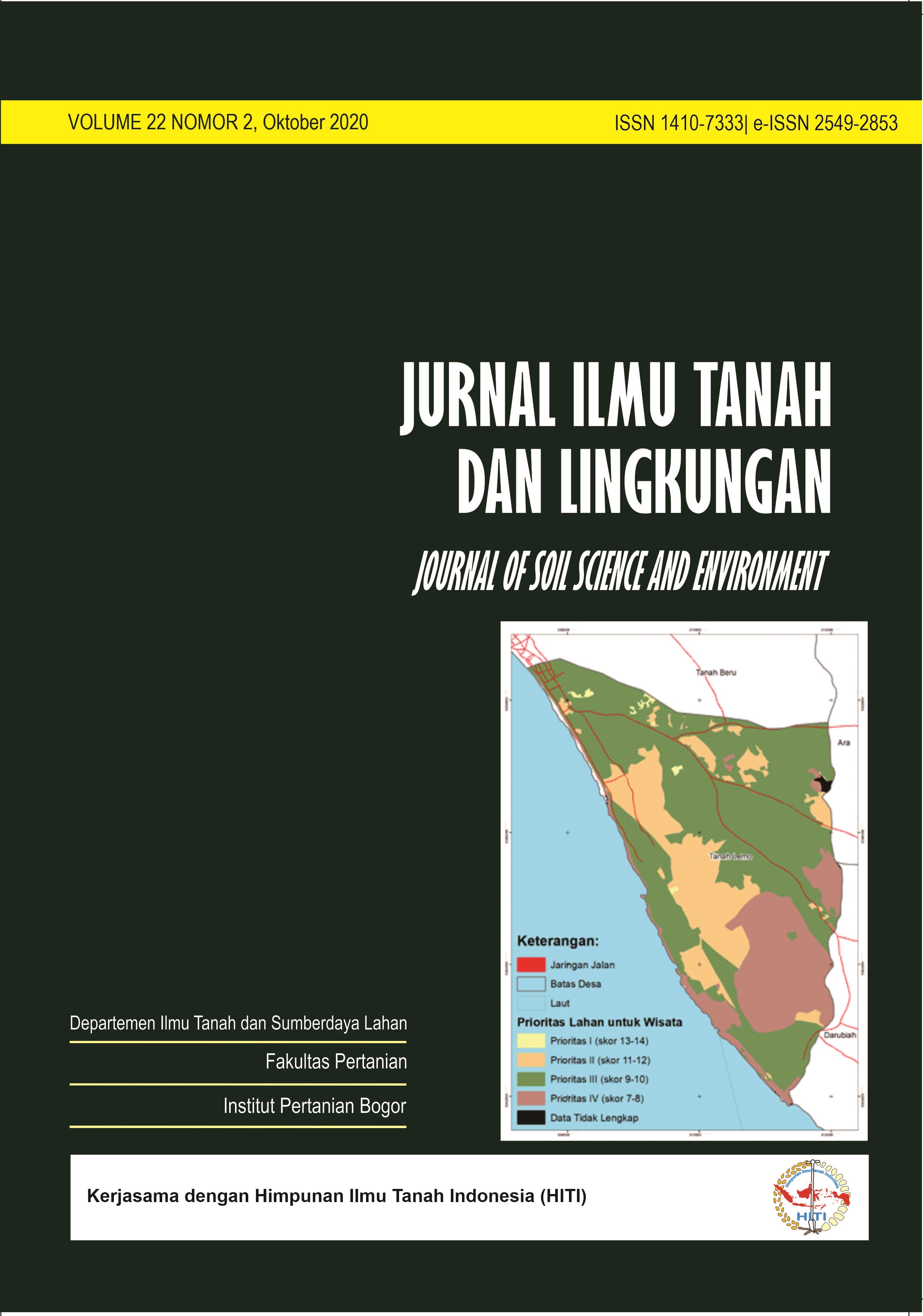Land Suitability for Mangosteen and Its Potential Development in Pauh District, Padang City
Kesesuaian Lahan untuk Tanaman Manggis dan Potensi Pengembangannya di Kecamatan Pauh Kota Padang
Abstract
Mangosteen has potential in the field of economics, statistic data of 2015 showed that mangosteen export reached a value of USD 17.2 million. Pauh District was chosen as mangosteen plantation development centre in Padang City. This development should be based on the land suitability so that the mangosteen plant are able to grow according to the climate and soil conditions. This research was conducted in Pauh District, Padang City. This study used a survey method consisting of preparation, pre-survey, the main survey, laboratory analysis, and data processing. Evaluation of land suitability was done with matching method which compare the characteristics of land suitability for mangosteen growth. The results of the research showed that land suitability for mangosteen was classified into S3 (marginally suitable) with subclass S3nr with limiting factor was nutrient retention for land unit SL1,2,3,4,7,8,9,11,15; subclass S3eh with limiting factor was erosion for land unit SL14; subclass S3nr,eh with limiting factors were nutrient retention and erosion for land unit SL5 and SL10. Land unit SL6,12,13, dan 16 were classified into S2 (moderately suitable) with subclass S2wa,nr with limiting factors were rainfall and nutrient retention for land unit SL6 and SL16; subclass S2wa,rc,nr,eh with limiting factors were rainfall, soil depth, nutrient retention, and erosion for land unit SL12; subclass S2wa,rc,nr with limiting factors were rainfall, soil depth, and nutrient retention for land unit SL13. The limiting factors was common to each land unit were nutrient retention (nr) and erosion (eh). There are 3 villages (Lambung Bukit, Limau Manis, and South Limau Manis) in Pauh District which have the greatest potential to be developed as mangosteen plantation development areas with total area was 5,862 ha.
Downloads
References
Badan Pusat Statistik. 2017. Kecamatan Pauh Dalam Angka 2017. BPS. Padang. 75 pp.
Djaenuddin, D., H. Marwan, H. Subagjo dan A. Hidayat. 2011. Petunjuk Teknis Lahan untuk Komoditas Pertanian. Balai Besar Litbang Sumberdaya Lahan Pertanian. Bogor. 36pp.
Fiantis, D. 2015. Morfologi dan Klasifikasi Tanah. Universitas Andalas. Padang. 264 pp.
Hakim, N., M.Y. Nyakpa, A.M. Lubis, S.G. Nugroho, M.A. Diha, G.B. Hong, dan H.H. Bailey. 1986. Dasar-Dasar Ilmu Tanah. Universitas Lampung. Lampung. 488 pp.
Hardjowigeno, S. 2010. Ilmu Tanah. Akademika Pressindo. Jakarta. 288 pp.
Rayes, L. 2007. Metode Inventarisasi Sumber Daya Lahan. CV Andi. Yogyakarta. 299 pp.
Sastrohartono, H. 2011. Evaluasi Kesesuaian Lahan untuk Perkebunan dengan Aplikasi Extensi Artificil Neural Network (Ann. Avx) dalam Arcview-GIS. Fakultas Teknologi Pertanian Institut Pertanian Stiper. Yogyakarta.
Stevenson, F.T. 1994. Humus Chemistry. John Wiley and Sons. New York. 512 pp.
Sitorus, S. 1989. Evaluasi Sumber Daya Lahan. Tarsito. Bandung. 185 pp.
Department of Soil Science and Land Resources Departemen Ilmu Tanah dan Sumberdaya Lahan, Faculty of Agriculture Fakultas Pertanian, IPB University



















